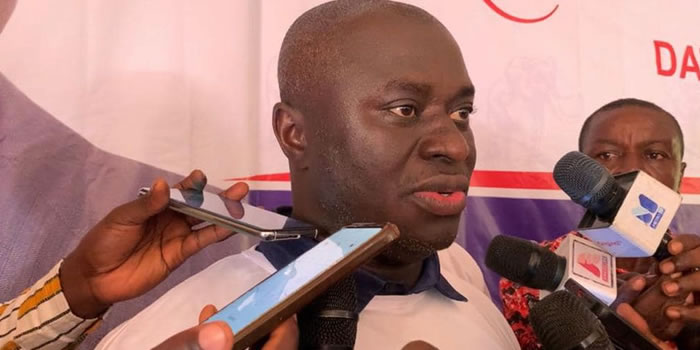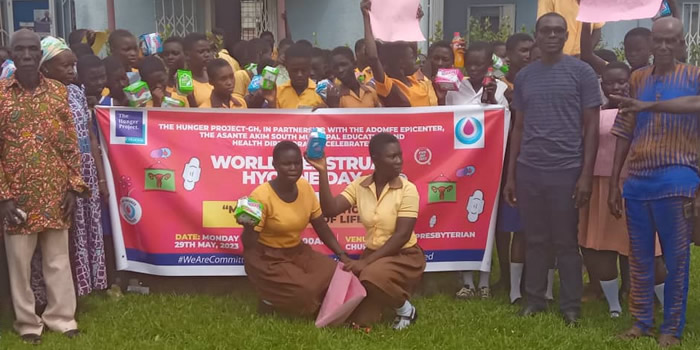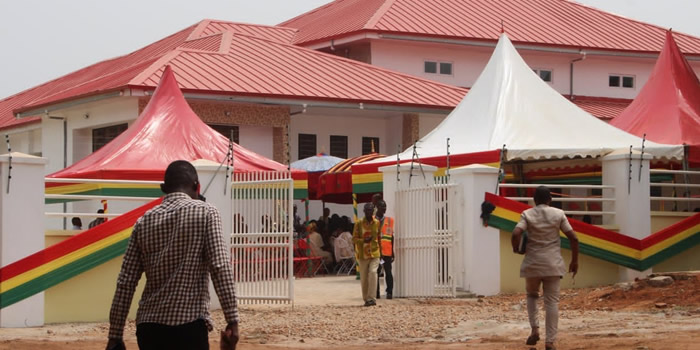

In this ever progressing world, there is the need for everyone one to be educated. This will enhance the knowledge of the populace and help improve the quality of decision taking in the district. One policy objective under education is to increase equitable access to and participation in quality education at all levels. The policy is also aimed at improving the quality of teaching and learning; bridge the gender gap and improving access to education for people with disability. Science and technical education is also to be promoted alongside health education on key public health issues such as Ebola, Malaria, Cholera, HIV and AIDS and road safety.
The important role that education plays in the social, cultural and economic development of a country as a whole and the district in particular cannot be overemphasized. In a developing district like the Asante Akim South Municipal, the need for skilled manpower is urgent. This is one of the major reasons why it is stipulated as one of the major issues of human resource development in the MTDF.
Number of Schools and Ownership
The district has 292 Educational Institutions ranging from the Pre-school level to the Senior High School /Vocational School Level. There are 252 Public Basic Schools, 34 Private Basic Schools, 3 Public and 2 Private SHS. There is also one Technical/Vocational Institute in the district. The Basic Schools consist of 95 KG, 96 Primary Schools and 61 JHS (Public). The Private Basic Schools include, 12 KG, 12 Primary Schools and 10 JHS. With this number of schools, the percentage of the population within 5km of a primary school is found to be about 97%. The District has adequate Educational Facilities to cater for its fundamental human resource development except for the absence of a tertiary institution. A look at the only Vocation/Technical institution shows that priority is not given vocational education and this could hinder Technical Education in the District.
The figure above indicates that, in the district about 21.0% of the populace have never attended school, 67.0% are in the basic schools,7.7% have secondary education, 1.0% have vocational/technical /commercial, 2.7% have post diploma and 0.6% have degree and higher. This shows that majority of the populace in the Asanti Akim South District have attained a basic education. More interventions have to be designed to increase the number of SHS and vocational, technical/commercial level of education. This is essential as there are more opportunities for further education in post-diploma programmes after SHS/commercial, technical/commercial level of education rather than the JHS.
The private sector should be involved in the provision of educational facilities at the low educational level. However, the sector’s participation reduces as the level of education increases. This is attributed to the high cost involved in the provision of educational facilities as the level of education increases. The private sector needs encouragement to grow so as to assist the public sector in providing quality education to the youth.
Educational Infrastructure
The Basic Education Certificate Examination (B.E.C.E) is used to measure academic performance at the basic level. The BECE is used to select candidates into Senior High schools, the job market or vocational training
The performance of students is greatly affected by the level of educational facilities available in the schools. Availability of good educational facilities helps in effective teaching and learning.
There are 271 school blocks with 167 school blocks in good and the remaining 104 school blocks in poor condition which need rehabilitation. This transcends into 795 classrooms. Out of these, 489 representing 61.5% are in good condition. However, 306 representing 38.5% classrooms are in deplorable condition and need major repairs.
There are 195 toilet facilities in the educational institutions out of which 156 (80.0%) are in good condition whilst 39 representing 20.0% are in poor condition. The schools are equipped with 189 Urinals and 127 water facilities. Inadequate teachers’ accommodation continues to be a problem in the district with only 15 schools having residential facilities for teachers.
The seating and writing places of the basic schools in the district have improved over the years but furniture supply continues to be a major issue affecting academic performance of students. Out of the 15761 dual desks, 9658 are in good shape while the remaining 6103 are in a poor condition. There is a backlog of 52019 dual desks based on the students’ population.
Enrollment Levels and Gender Composition
The total number of enrollment in the district at all levels in both public and the private schools is 44,433. This is made up of 23,573 boys and 20,860 girls.
Enrollment levels in the district
Gender composition also reduces as they climb the high level in the education ladder. The female and male proportion of the overall pre-school enrollment (public and private combined) stands is analysed in the table below. The male enrollment is higher the female enrollment at the pre-school level because of the higher dropout rate among girls than boys.
From the figure above, it is clear that enrollment in the district at the primary is high with 50.9%. this is followed by kindergarten having 19.0%, JSS/JHS having 18.0%, SSS/JHS having 5.9%, Nursery having 5.2%, Tertiary having 0.6%, post middle certificate having 0.3% and Vocational /technical/commercial having 0.1% respectively.
At the basic level, the enrollment is high as compared to the other levels. The contributing factor is due to the government’s educational policies such as the School Feeding Programme and the Capitation Grants which serves as incentives for parents to educate their wards.
District enrollment rate
Efforts at Promoting Girl-Child Education
This indicator measures the equality of opportunity, fairness and efficiency of education, measured as a ratio of the number of enrolled girls to enrolled boys in primary, secondary and tertiary education (also known as the gender parity index), regardless of ages. Education is one of the most important aspects of human development. It is widely acknowledged that eliminating gender disparity at all levels of education would help to increase the status and capabilities of women and reduce feminisation of poverty (GSGDA, 2010). Female education is also an important determinant of economic development.
The emphasis on girls is because girls are more likely than boys to suffer from limited access to education, especially in rural areas and/or where families have to make difficult choices in situations of limited resources or low income. This situation is even worse at higher levels of education as it is well acknowledged that in most developing countries girls potentially face additional hurdles in accessing and remaining within the educational ladder, particularly in the later grades as daughters assume additional burdens within the home and are more susceptible to harassment from male pupils/students and teachers as well as forced early marriage.
Low participation and performance of girls in basic and secondary schools is one of the key problems of the education sector in the district. To reverse this trend, the following measures have been put in place:
(a) Scholarships are offered to brilliant but Needy Girls by Integrated Social Development Centre (ISODEC) an NGO, and Asante Akim South Municipalt Assembly. 1,100 girls have so far benefited from the project.
(b) About thirty (30) Dropout girls have been counselled and re-admitted to schools.
(c) Science, Technology and Mathematics Education (STME) Workshops are organised for girls every year.
(d) Communities are sensitised on the importance of girls’ education. This is done through churches and opinion leaders.
(e) The Best girl at BECE every year is awarded full scholarship to pursue secondary education.
School Participation
The District is highly endowed with a school going population (4yrs-20yrs) who are actually in school. As at 2010, the male school going population was 19,673for Public and the Private Schools in the district whiles the females were 17385. From the table below, it shows that the males school going population in the Public and the Private Schools at all levels in the district outpace the females school going populace in the district. The District has to deploy some proactive measures to improve upon the girl child education in the district. Parents should be educated on the need to send their girls to school and to avoid limiting them to doing house chores. Scholarship packages should be set aside for girls that perform at the basic level to help them further their studies. The district still has more to do in order to achieve a 100% school participation in basic schools.
Considering the Public and the Private schools in the district, it can be deduced from the table that the number of participation in the Public Schools both at the Lower Primary and the Senior High Schools is higher than those in the Private Schools. The low turnout of students in the Private Schools can be attributed to the lack of funds for parents to pay the school fees of their wards. Also, the introduction of the school feeding programme has helped to increase in the turnouts at the Public Schools. The issue is not different as compared to those in the Senior High Schools.
There are high turnouts at the Public Schools than in the Private Schools. This is due to the fact that majority of government infrastructural facilities go to support the Public Schools than the Private Schools. Also, about 84% of the households’ access SHS education from schools outside the district. Besides this, the participation rate is also due to poor performance of students at the Basic Education Certificate Examination. Therefore some of the graduates from JHS are forced to join their parents in economic activities such as quarrying and illegal mining activities (galamsey) instead of continuing with their education.
Number of Teachers and their Qualifications
There are 1048 teachers in the district at the Basic School and the Senior High School level which represents an increase of 4.5% over the figure of 2006 of 1003. Out of these, 574 teach in Primary level and 365 teach in the JHS level. There are 701 (66.9%) of Trained Teachers in the district at the Basic level compared to 347 Untrained Teachers. The proportion of Trained Teachers in the Primary, JHS and SHS are 57.5%, 80%, and 82.6% respectively. The proportion of Untrained Teachers is 42.5% for the primary level, 20% for the JHS level and 17.4% for the SHS level.
The percentage of teachers with requisite qualifications in the basic schools registered an increase of 9% over the last 4 years. This is due to the mass Diploma Programme launched to train more teachers. There is also a district sponsorship programme in the District to provide more teachers. Even though the percentage of trained teachers is increasing, the number of untrained teachers is still high. The high number of untrained Teachers has given rise to poor results of schools at various examinations. Most of the graduates cannot compete with those in other schools and are therefore not able to continue to senior high school and this has contributed to high youth unemployment in the district.
Teacher – Pupil Ratios
The teacher pupil ratio continues to be far below the national average in both primary and junior secondary schools. These low ratio coupled with the high proportion of trained teachers in the district is a potential for improved quality of basic education since the teachers will be able to effectively control classes. The district can also increase its enrollment levels up to some point without necessarily increasing the number of teachers. However, it has been revealed that in spite of the good Pupil-Teacher ratio there are quite a number of schools which either by their small enrollment levels or location lack trained teachers. The proportion of trained teachers needs to be increased to improve teaching and learning at the basic education level in order to improve students’ performance.
Pupils’ Performance
With respect to the performance of the students at Basic Education Certificate Examination (BECE), the district obtained a percentage pass of 60% (boys 60% and Girls 40%). This is a little lower than the regional average of 60.4%. However, an assessment of the performance of the students for the past five years revealed that performances of over the years have been increasing. In the 2006 BECE only 35% of students presented passed, but increased in 2007, 2008 and 2009 to 56%, 59% and 60% respectively.
Many factors account for the low academic performance of the students which includes the following:
- The existence of many Untrained Teachers
- Poor Parents participation in Education and Trained Teachers refusing posting to rural communities which constitute more than 75% of the district.
Status of Capitation Grant and School Feeding Programmes
The capitation grant policy by the government of Ghana has been operating in the district since its inception in 2004. All the public schools in the district are currently subscribed to the programme. The capitation grant is the main source of financial and logistical support for the all the public schools in the district. The major problem with the programme in the district is the delays in the release of funds and other logistics for the day to day administration of education in the district.
The School Feeding Programme is currently operating in eight (8) schools in the district. The programme has increase enrolment in the beneficiary schools and has also improved the nutrition and health status of most of the school children. However, the programme needs to be expanded to cover more of the 252 public basic schools in the district.
Constraints/Problems of Education and Suggested Solutions:
The main problems and constraints facing the educational sector in the district are as follows:
i. Poor School Structures: - Some of the schools are in deplorable conditions. These structures do not promote effective teaching and learning as these Schools have to close when it is about to rain.
ii. Inadequate Furniture: - Tables and Chairs in most of our schools are inadequate. In some schools as many as four (3) pupils sit and write on one Dual Desk. In some Primary Schools, there are no cupboards to store pupils’ exercise books.
iii. Insufficient Learning/Teaching Materials: - Some parents cannot afford to buy stationery for their children. These children do not take part in most written exercise.
iv. Indiscipline among Teachers and Pupils: - Indiscipline on the part of Teachers and Pupils is one cause of poor examination results. Some teachers cut classes to do their private business. Pupils who play truant and absent themselves from school miss many lessons and classes. The attitudes of some male teachers, such as drink alcohol during school hours, are inimical to the development of education in the district. Sexual relationships among male teachers and female pupils sometimes result in pregnancy among these female pupils.
v. Lack of Teachers: - The district does not have full complement of teachers. Some schools are understaffed especially in the remote areas. Out of the 1003 teachers in the district 41.9% are untrained.
vi. Less Community Participation: Lack of effective community participation in school management. For instance, out of the 258 basic schools in the district, only 100 have functioning School Management Committees (SMCs). This gives a ratio of 100:258.
The following measures have been taken to address these problems:
i. Decent School infrastructure (School Blocks, Teachers Quarters etc) have been provided for schools in the district to facilitate healthy environment for effective teaching and learning.
ii. Enough textbooks have been provided to cover all areas of learning. These should be equally distributed.
iii. The District Assembly has step up sponsorship scheme for Teacher Trainees. The Assembly has so far sponsored 156 Teachers in the Teacher Training Institutions in the past 4 years. 300 untrained teachers are currently being sponsored to undertake UTDBE course.
iv. 60 Teachers have also been sponsored to undertake diploma and degree programmes through Distance Education and full-time programmes in the Universities to return to teach in the District after the course.
v. Communities have been counseled on the importance of Formal Education and therefore the need for their participation.
vi. The Assembly has decided to provide electricity to schools in major towns to enable students and pupils to study at night.
vii. Mock examinations and vacation classes have been organized for pupils in Basic Schools for the past 2 years
Vocational/Technical Training for the Youth
The National Youth Council administers seven (7) Youth Leadership Training Institutes throughout the country, which provide young people between the ages of 15 and 23 years with a two-year vocational and leadership skill training. Fortunately, one of the Institutes is located at Asankare in the Asante Akin South District. The various courses studied at the Institute include; General Agriculture carpentry and Joinery, Masonry, Dressmaking and Catering.
The Assembly since 2004 has been sponsoring all students who are indigenes of the District at the institute to acquire skills in the courses being taught at the Asankare Youth Leadership training Institute. The sponsorship package is GH¢40 per student per year. 171 students have been sponsored since 2004. The Assembly has also provided funds to rehabilitate water system and Girls dormitory at the institute.
Apprenticeship Schemes in the District
There are recommendable apprenticeship schemes in the District, although they are not well patronized. Some of the apprentices find it difficult to pay for the apprentice fee, which ranges from forty to sixty Ghana Cedis (GH¢40 - GH¢60).
The District Assembly in collaboration with Business Advisory Centre / Rural Enterprise Project have assisted seventy five (75) young people since 2004 to get Graduate apprentice start-up fund to start businesses after acquiring skills in Hairdressing, Dressmaking (free-hand cutting) Carpentry and Joinery, Masonry, Batik, Tie and Dye, Soap Making, etc.
The Business Advisory Centre (BAC) of the NBSSI in the district has organized training for more than 378 Artisans, Entrepreneurs and Unemployed since establishment in 2005. They have also counselled more than 500 Master craft men and businessmen in informal sector. In addition to these, the Rural Enterprises Project (REP) has sponsored 4 Carpenters to undergo training. However they have covered only 16% of the district since its establishment in 2005.
Moreover, under the National Youth Employment Programme (NYEP), two centres have been opened in Juaso and Ofoase to train the youth in activities such as Palm oil extraction, soap making, gari processing, tie and dye design and pomade making. Currently, 85 beneficiaries are being covered under the programme.
Date Created : 11/28/2017 2:27:45 AM












 facebook
facebook
 twitter
twitter
 Youtube
Youtube
 +233 593 831 280
+233 593 831 280 0800 430 430
0800 430 430 GPS: GE-231-4383
GPS: GE-231-4383 info@ghanadistricts.com
info@ghanadistricts.com Box GP1044, Accra, Ghana
Box GP1044, Accra, Ghana